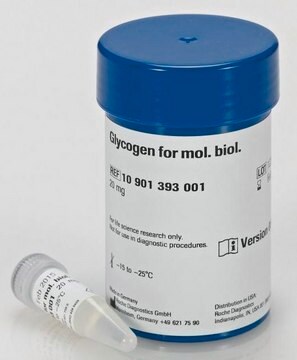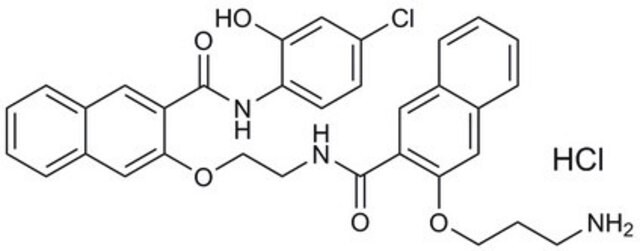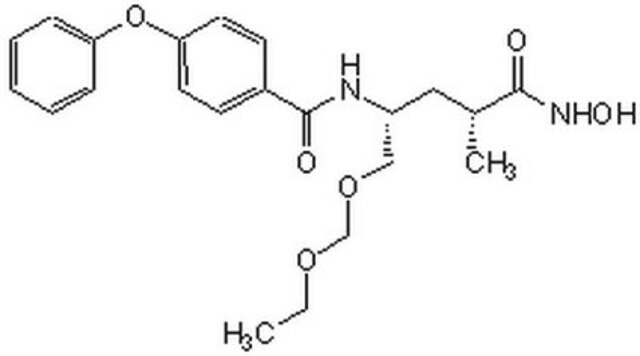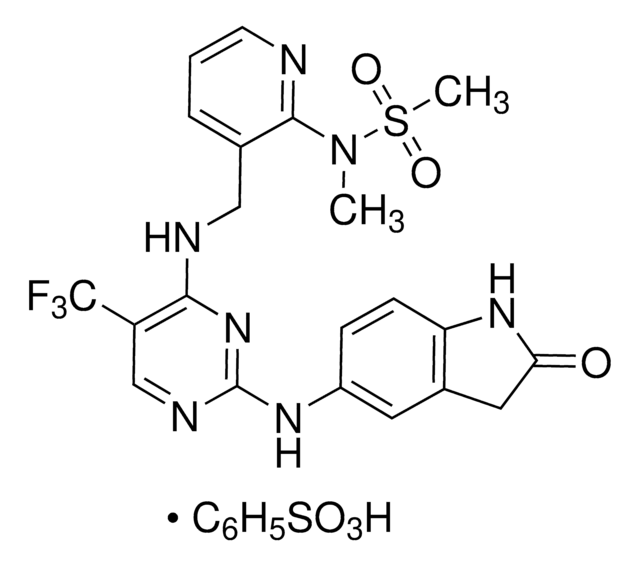SML2453
GSK-A1
≥98% (HPLC)
别名:
5-(2-Amino-1-(4-morpholinophenyl)-1H-benzimidazol-6-yl)-N-(2-fluorophenyl)-2-methoxypyridine-3-sulfonamide, 5-(2-Amino-1-(4-morpholinophenyl)-1H-benzo[d]imidazol-6-yl)-N-(2-fluorophenyl)-2-methoxypyridine-3-sulfonamide, 5-[2-Amino-1-[4-(4-morpholinyl)phenyl]-1H-benzimidazol-6-yl]-N-(2-fluorophenyl)-2-methoxy-3-pyridinesulfonamide, Compound A1, PI4KA Inhibitor A1
About This Item
推荐产品
化驗
≥98% (HPLC)
形狀
powder
顏色
white to beige
溶解度
DMSO: 2 mg/mL, clear
儲存溫度
−20°C
SMILES 字串
O=S(C1=CC(C2=CC=C3C(N(C4=CC=C(N5CCOCC5)C=C4)C(N)=N3)=C2)=CN=C1OC)(NC6=CC=CC=C6F)=O
InChI
1S/C29H27FN6O4S/c1-39-28-27(41(37,38)34-24-5-3-2-4-23(24)30)17-20(18-32-28)19-6-11-25-26(16-19)36(29(31)33-25)22-9-7-21(8-10-22)35-12-14-40-15-13-35/h2-11,16-18,34H,12-15H2,1H3,(H2,31,33)
InChI 密鑰
AJOGHKUZDLYXKS-UHFFFAOYSA-N
生化/生理作用
儲存類別代碼
11 - Combustible Solids
水污染物質分類(WGK)
WGK 3
閃點(°F)
Not applicable
閃點(°C)
Not applicable
我们的科学家团队拥有各种研究领域经验,包括生命科学、材料科学、化学合成、色谱、分析及许多其他领域.
联系技术服务部门








